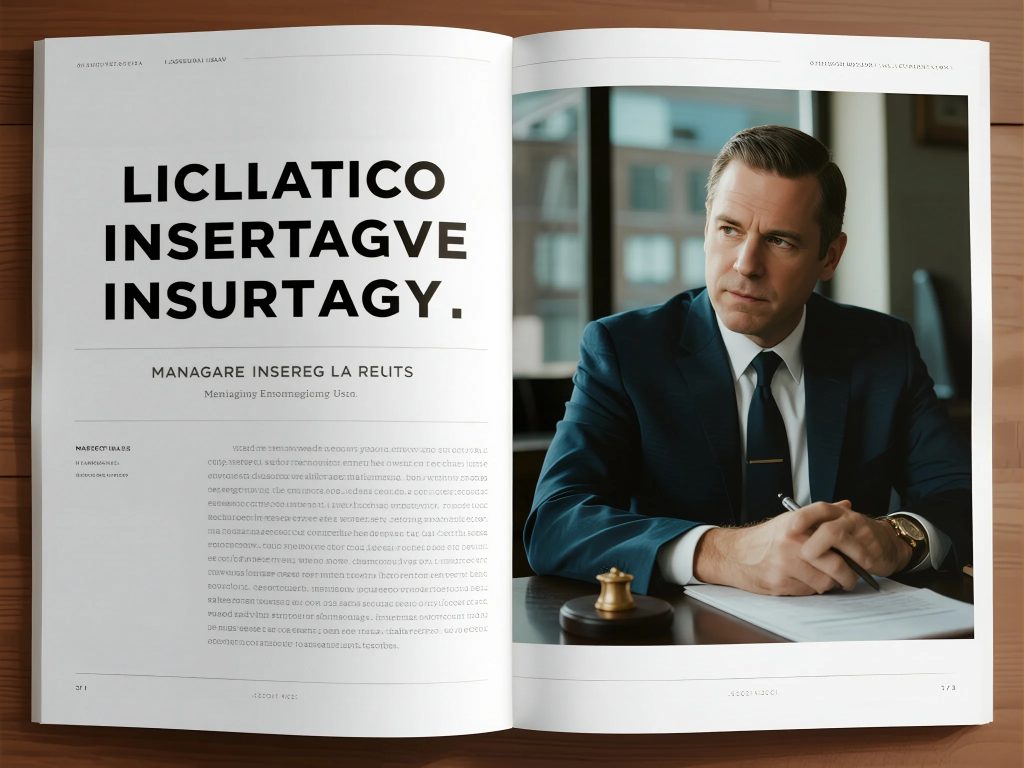Understanding Corporate Liability Insurance in the Modern American Business Environment The landscape of American business operations has evolved dramatically over the past decade, creating unprecedented liability exposures that require sophisticated insurance solutions to protect corporate assets, reputation, and operational continuity. Corporate liability insurance USA has become an essential component of comprehensive risk management strategies, addressing the complex legal environment
that modern corporations navigate daily. These insurance solutions provide critical financial protection against third-party claims, regulatory investigations, and litigation scenarios that could otherwise threaten organizational viability and stakeholder confidence. The increasing frequency of lawsuits, regulatory enforcement actions, and substantial jury awards has made corporate liability protection more important than ever before, with businesses across all industries recognizing the need for robust insurance coverage that addresses both traditional and emerging risk exposures. Contemporary corporate liability insurance programs must address diverse risk categories including general liability, professional liability, product liability, and employment practices liability, each requiring specialized coverage approaches that understand industry-specific exposures and regulatory requirements. The financial consequences of inadequate liability protection can be devastating, with organizations facing potential bankruptcy, operational disruption, and permanent damage to business reputation when significant liability events occur without appropriate insurance coverage in place.Comprehensive Umbrella Insurance Protection for Corporate Entities Modern corporations require sophisticated insurance strategies that extend beyond primary liability coverage limits, making umbrella insurance for companies an indispensable component of comprehensive risk management frameworks. These excess liability solutions provide additional protection layers that activate when primary insurance limits are exhausted, ensuring continued financial protection against catastrophic loss scenarios that could otherwise compromise corporate financial stability and business continuity objectives. Umbrella insurance
policies typically provide broad coverage extensions that address various liability exposures across different operational areas, business activities, and geographic locations that might not be adequately covered through primary insurance approaches or may require coordinated excess protection strategies to ensure complete risk transfer. The specialized nature of corporate umbrella insurance addresses the substantial liability exposures that modern businesses face in increasingly complex legal environments and litigious landscapes, ensuring comprehensive financial protection against catastrophic loss scenarios, substantial legal judgments, and significant settlement amounts that could otherwise threaten corporate viability and shareholder value. These insurance solutions understand the intricate liability landscape, regulatory environment characteristics, and financial exposure parameters that influence appropriate excess coverage levels and protection structures for comprehensive corporate risk management. The implementation of effective umbrella insurance involves careful assessment of organizational liability exposures, evaluation of primary insurance coverage limits, and analysis of financial protection needs that collectively determine appropriate umbrella coverage amounts, policy attachment points, and protection terms for comprehensive corporate liability management programs.Director and Officer Insurance for Executive Leadership Protection
Corporate governance has become increasingly complex and scrutinized, making director & officer insurance essential protection for organizational leadership facing potential personal liability arising from their management decisions, oversight responsibilities, and governance activities. These sophisticated insurance solutions address the substantial liability exposures that directors and officers encounter in their corporate roles, ensuring comprehensive protection against allegations of wrongful acts, management errors, breach of fiduciary duties, and governance failures that could otherwise threaten personal financial security and professional reputation. The regulatory environment surrounding corporate governance has intensified significantly, with increased enforcement actions, shareholder litigation, and regulatory investigations creating substantial personal liability risks for corporate leaders who must make complex decisions in challenging business environments while maintaining fiduciary responsibilities to shareholders, stakeholders, and regulatory authorities. Director and officer insurance coverage provides critical financial protection including defense cost coverage, settlement payment protection, and judgment reimbursement for personal liability claims, helping corporate leaders fulfill their governance responsibilities without excessive concern about personal financial exposure from management decisions and oversight activities conducted in good faith. These insurance programs typically feature multiple coverage components addressing entity protection, side A coverage for non-indemnifiable losses, side B coverage for corporate reimbursement, and side C coverage for securities claims that standard commercial insurance policies may not adequately address or may specifically exclude from protection scope. The underwriting process for director and officer insurance involves detailed evaluation of corporate governance practices, financial reporting procedures, risk management frameworks, and historical litigation experience that influence both coverage availability and premium calculations within the management liability insurance marketplace.
Corporate Crime Insurance for Financial Security and Asset Protection
The digital transformation of business operations has created new vulnerabilities and expanded traditional crime exposures, making corporate crime insurance an essential component of comprehensive corporate protection strategies that address financial losses resulting from fraudulent activities, dishonest employee actions, computer fraud schemes, and other criminal activities. These specialized insurance products provide critical financial protection for organizations facing potential losses from white-collar crime, employee dishonesty, and third-party criminal activities that modern businesses encounter in increasingly digital and complex operational environments, ensuring comprehensive protection against financial losses, asset misappropriation, and fraudulent transactions that could otherwise threaten organizational viability and stakeholder confidence. Corporate crime insurance solutions address the substantial financial risks associated with various criminal activities including employee theft, computer fraud, funds transfer fraud, forgery, and money transfer deception schemes that standard commercial insurance policies may not adequately cover or may explicitly exclude from protection scope. The evolving nature of corporate crime, particularly in digital environments, requires sophisticated insurance approaches that understand technological advancement impacts, cybersecurity vulnerabilities, and internal control challenges that influence appropriate coverage structures and protection limits for comprehensive financial crime risk management. These insurance programs typically feature multiple coverage components addressing employee dishonesty losses, computer fraud incidents, funds transfer fraud scenarios, forgery alterations, and money transfer deception schemes that require specialized underwriting expertise and claims handling capabilities. The risk assessment process for corporate crime insurance involves detailed evaluation of internal control environments, employee screening practices, financial transaction procedures, and information security measures that influence both coverage availability and premium calculations within the crime insurance marketplace.

Professional Errors and Omissions Insurance for Service Excellence
Service-based businesses and professional organizations face increasing liability exposures related to their professional advice, services, and expertise, making E&O insurance USA essential protection against claims arising from alleged errors, omissions, negligence, or inadequate performance in professional services delivery. These comprehensive insurance solutions address the substantial liability risks that professional firms, consulting organizations, and service providers encounter when clients allege financial losses resulting from professional advice, service delivery failures, or inadequate performance that falls below expected professional standards. The professional liability landscape has become increasingly complex, with clients maintaining higher expectations, regulatory requirements becoming more stringent, and legal precedents expanding the scope of professional responsibility across various industry sectors and service categories. Errors and omissions insurance provides critical financial protection including defense cost coverage, settlement payment protection, and judgment reimbursement for professional liability claims, helping service providers maintain their professional practices without excessive concern about personal or organizational financial exposure from professional activities conducted according to industry standards and best practices. These insurance programs typically address diverse professional liability exposures including advice liability, service delivery errors, professional negligence claims, and failure to deliver promised results that could result in client financial losses and subsequent litigation against professional service providers. The specialized coverage approaches address industry-specific professional concerns such as technology errors and omissions, healthcare professional liability, financial services compliance violations, and consulting advice liability that require customized insurance solutions based on particular professional activities and client service characteristics. The underwriting process for errors and omissions insurance involves detailed assessment of professional qualifications, service delivery procedures, client relationship management practices, and historical claims experience that influence both coverage availability and premium calculations within the professional liability insurance marketplace.
Emerging Legal Risks and Insurance Response Strategies
The contemporary business environment presents numerous emerging legal risks that traditional insurance approaches may not adequately address, requiring innovative insurance solutions and comprehensive risk management strategies that anticipate future liability exposures and provide appropriate financial protection against evolving legal challenges. These emerging risks include cybersecurity liability, data privacy violations, environmental compliance failures, social media liability, and regulatory enforcement actions that reflect changing legal standards, technological advancement impacts, and evolving societal expectations regarding corporate responsibility and accountability. Modern corporate liability insurance USA programs must evolve to address these emerging exposures through enhanced coverage terms, specialized policy endorsements, and innovative insurance products that provide comprehensive protection against both traditional and contemporary liability scenarios. The regulatory environment continues to evolve rapidly, with new legislation, enforcement priorities, and legal precedents creating additional compliance obligations and liability exposures that require proactive insurance planning and comprehensive coverage strategies. Organizations must implement integrated risk management approaches that combine traditional liability insurance with specialized coverage solutions addressing cyber liability, employment practices liability, fiduciary liability, and other emerging risk categories that could result in substantial financial losses and operational disruptions. The insurance industry has responded to these emerging risks by developing specialized coverage solutions, enhanced policy terms, and innovative risk transfer mechanisms that provide comprehensive protection against evolving liability exposures while maintaining cost-effective premium structures and efficient claims handling procedures. These emerging risk insurance solutions typically feature flexible coverage terms, broad protection scope, and specialized claims handling expertise that address the unique characteristics and financial implications of contemporary liability exposures affecting modern business operations.
Integrated Risk Management and Insurance Coordination
Effective corporate liability protection requires sophisticated coordination between different insurance components, comprehensive risk assessment procedures, and integrated management approaches that ensure complete coverage without gaps or overlaps that could compromise financial protection or create administrative inefficiencies. The implementation of coordinated insurance programs involves careful analysis of organizational risk exposures, evaluation of coverage interactions, and development of integrated protection strategies that optimize insurance efficiency while maintaining comprehensive financial protection against diverse liability scenarios. Modern corporations benefit from integrated insurance approaches that combine umbrella insurance for companies, director & officer insurance, and other specialized coverage components through coordinated policy terms, aligned coverage structures, and consistent protection approaches that address corporate risk management needs through appropriate insurance product combinations and coverage coordination strategies. These integrated frameworks typically feature coordinated policy terms, aligned coverage structures, and consistent protection approaches that facilitate comprehensive risk management and efficient program administration while ensuring appropriate financial protection against various liability exposures that could affect organizational performance and stakeholder interests. The specialized integration services address corporate-specific risk management concerns such as coverage coordination, policy administration, claims handling consistency, and program management efficiency that require expert guidance and professional support to ensure comprehensive protection implementation and appropriate risk management outcomes. The program management expertise ensures that integrated corporate protection frameworks maintain appropriate coordination between different insurance components, with consistent underwriting approaches, coordinated premium structures, and aligned claims handling procedures that facilitate comprehensive risk management and efficient program administration. The continuous program evaluation ensures that integrated corporate protection remains aligned with evolving business operations, regulatory requirements, risk environments, and insurance market conditions that affect corporate risk exposures and appropriate coverage approaches over time.
Future Considerations for Corporate Liability Insurance
The future of corporate liability insurance will be shaped by technological advancement, regulatory evolution, and changing business practices that create new risk exposures while transforming traditional liability scenarios into more complex and interconnected challenges requiring innovative insurance solutions and comprehensive risk management strategies. Organizations must anticipate future liability trends including artificial intelligence liability, autonomous system risks, environmental sustainability obligations, and social responsibility expectations that will influence insurance coverage requirements and risk management approaches in coming years. The integration of corporate crime insurance and E&O insurance USA with emerging risk coverage solutions will become increasingly important as organizations face more complex liability exposures that span multiple risk categories and require coordinated insurance responses to ensure comprehensive financial protection. The insurance industry continues to develop innovative coverage solutions, enhanced policy terms, and specialized risk transfer mechanisms that address evolving liability exposures while maintaining cost-effective premium structures and efficient claims handling procedures that support organizational risk management objectives and financial protection needs. These future-oriented insurance approaches will likely feature enhanced flexibility, broader coverage scope, and specialized expertise that address the unique characteristics and financial implications of emerging liability exposures affecting modern business operations in dynamic and competitive market environments. The successful navigation of future liability challenges will require proactive insurance planning, comprehensive coverage strategies, and ongoing risk management evaluation that ensures appropriate financial protection against both current and anticipated liability exposures that could affect organizational performance, stakeholder relationships, and long-term business success in evolving legal and regulatory environments.




